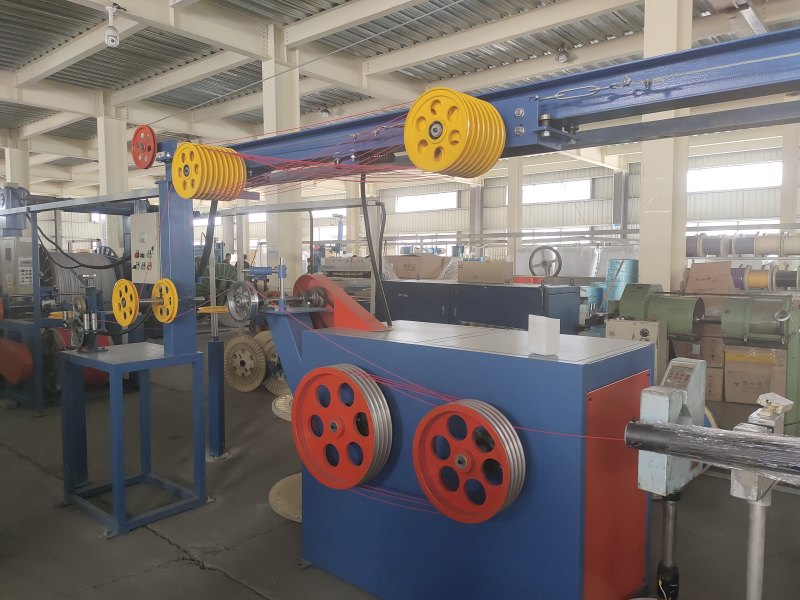Fiber Optic Cables: Empowering High-Speed, Reliable Connectivity
Fiber optic cable consists of one or more optical fibers, which are capable of transmitting light signals.
Each optical fiber is individually coated with protective plastic layers and enclosed in a suitable protective tube.

1. Main Types of Fiber Optic Cable
Single-Mode Fiber (SMF) Cables
Designed for long-distance transmissions, SMF cables possess a small core size that enables the propagation of a single light mode. They exhibit low signal loss, high bandwidth capabilities, and are well-suited for applications demanding swift data transmission over extended distances.
Multimode Fiber (MMF) Cables
MMF cables encompass a larger core size, facilitating the simultaneous propagation of multiple light modes. They are suitable for shorter-distance transmissions and find common usage in LAN (Local Area Network) applications. MMF cables provide a cost-effective solution for high-speed data transfer.
Self-Supporting Fiber Optic Cables
Self-supporting cables, also known as ADSS (All-Dielectric Self-Supporting) cables, are designed for aerial installations without the need for additional support structures. They are ideal for overhead power lines, railways and other long-distance applications. These cables combine fiber optic strands and strength members in a single unit, providing excellent durability and ease of installation.
Underground Fiber Optic Cables
Underground cables are specifically designed for burial in trenches or conduits. They feature a rugged construction that protects the fibers from moisture, mechanical stress, and other environmental factors. These cables are commonly used for long-haul telecommunications networks and urban fiber deployments.
Outdoor/Indoor Fiber Optic Cables
Outdoor/Indoor cables are designed for transitioning between outdoor and indoor environments.
They have a durable construction that provides protection against moisture, UV radiation and temperature fluctuations.
These cables are commonly used for building-to-building connectivity, campus networks, and fiber distribution within facilities.
2. Features and Benefits
-
High Bandwidth and Speed:
Fiber Optic Cables deliver exceptional bandwidth capabilities, enabling the transmission of vast amounts of data at remarkable speeds. They facilitate efficient data transfer, support bandwidth-intensive applications, and future-proof your network infrastructure. -
Immunity to Electromagnetic Interference (EMI):
Fiber Optic Cables are impervious to EMI, making them ideal for environments characterized by high levels of electromagnetic interference, such as industrial settings or areas with heavy electrical equipment. They ensure uninterrupted and pristine signal transmission without degradation. -
Long-Distance Transmission:
Single-Mode Fiber Cables are renowned for their ability to facilitate long-distance transmissions, making them well-suited for telecommunications networks, data centers, and other applications requiring connectivity over extensive distances. -
Secure Data Transmission:
Fiber Optic Cables offer enhanced data security as they are exceedingly challenging to tap into or intercept. They provide a secure and reliable medium for transmitting sensitive data, safeguarding your information from unauthorized access. -
Lightweight and Space-Efficient:
Fiber Optic Cables are lightweight and compact, requiring minimal physical space compared to traditional copper cables. This attribute allows for easier installation, improved cable management, and efficient utilization of limited space in data centers or densely populated network environments.
3. How to Select the Right Fiber Optic Cable
Application-Specific Requirements:
Consider the specific requirements of your application, including distance, bandwidth needs, and environmental factors. Choose the Fiber Optic Cable type that aligns with your application's unique demands.
Quality and Reliability:
Opt for cables manufactured by reputable companies recognized for their commitment to quality and reliability. Look for industry certifications and customer reviews to ensure you select a dependable product.
Cable Specifications:
Evaluate the cable's specifications, including fiber count, core size, and connector compatibility. Ensure that the cable adheres to necessary standards and is compatible with your network infrastructure.
Future-Proofing:
Consider the scalability and potential for future expansion of the cable. Select a cable that allows for future upgrades and can accommodate increasing bandwidth requirements, ensuring long-term viability.
Professional Support:
Choose a supplier that offers professional support and guidance, assisting you in selecting the right Fiber Optic Cable for your specific needs. They should provide technical expertise, installation assistance, and responsive customer service.
Explore Fibeye extensive range of Fiber Optic Cables to discover the perfect solution for your high-speed, reliable connectivity requirements.
For more information or assistance, please reach out us!






